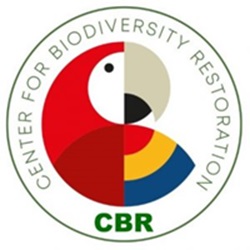A strange whistle to my ears resounded in the grasslands and bushes. We were at one end of the huge garden of Macaw Lodge. I would never have imagined that it was a Uniform Crake, but thanks to the keen hearing of guides Beto Guido and Marco Umaña, we were able to register this species for the first time in the Macao Sanctuary, on the morning of May 9 during Global Big Day 2020. The record was made only by singing and despite the team’s effort to try to spot it, we could only hear it.
This elusive and shy crake (Amaurolimnas concolor) has rarely been sighted in the Costa Rican Central Pacific, so this record was of great importance to the region. Because it prefers to inhabit the dense undergrowth thickets, it is very difficult to see and easier to be heard.</h3>
<h3>A few weeks later Lisbeth Quiroz, chef at Macaw Lodge pointed out to me the unknown song very close to the kitchen, which was repeated day by day. Soon we noticed that we had them residing practically next to the hotel. One day I could even film one walking calmly winged by our reception area.
That deplorable video taken with my phone, was enough to motivate Beto to return in search of the “photo of the crake”. A few days later he was again at the hotel, calling the bird at five in the morning. After a couple of hours lying next to the stream and with a little mud on it, he finally managed an average quality photo.
But that image was not going to satisfy him. A few days later he returned for the gold trophy and working together we managed to get a couple of Uniform Crakes to walk in front of Beto, who shot burst after burst, while I drove the rallies (Family Rallidae) in front of him. The results were spectacular.
For more than two months now we have been pleased to have these new residents in the gardens of Macaw Lodge, the 348th species for the ecological sanctuary. We hope that the number of records of this and other rare species continues to grow, these types of events are those that encourage us to continue with our mission of restoration of biodiversity.

![cbpl-logo-3[1]](https://c4br.org/wp-content/uploads/elementor/thumbs/cbpl-logo-31-qiwqbfwjaa8ydzluyxar06b8ff92ldef5pe5jzcxvi.jpg)
